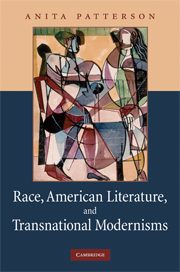Book contents
- Frontmatter
- Contents
- Acknowledgments
- Introduction. Towards a comparative American poetics
- Chapter 1 Transnational topographies in Poe, Eliot and St.-John Perse
- Chapter 2 Hybridity and the New World: Laforgue, Eliot and the Whitmanian poetics of the frontier
- Chapter 3 From Harlem to Haiti: Langston Hughes, Jacques Roumain and the avant-gardes
- Chapter 4 Signifying modernism in Wilson Harris's Eternity to Season
- Chapter 5 Beyond apprenticeship: Derek Walcott's passage to the Americas
- Epilogue
- Notes
- Bibliography
- Index
Introduction. Towards a comparative American poetics
Published online by Cambridge University Press: 22 September 2009
- Frontmatter
- Contents
- Acknowledgments
- Introduction. Towards a comparative American poetics
- Chapter 1 Transnational topographies in Poe, Eliot and St.-John Perse
- Chapter 2 Hybridity and the New World: Laforgue, Eliot and the Whitmanian poetics of the frontier
- Chapter 3 From Harlem to Haiti: Langston Hughes, Jacques Roumain and the avant-gardes
- Chapter 4 Signifying modernism in Wilson Harris's Eternity to Season
- Chapter 5 Beyond apprenticeship: Derek Walcott's passage to the Americas
- Epilogue
- Notes
- Bibliography
- Index
Summary
“Those countries,” says T. S. Eliot, “which share the most history, are the most important to each other, with respect to their future literature.” The purpose of this book is to examine how shared history – of colonial settlement, empire-building, slavery, cultural hybridity and diasporic cosmopolitanism – informed the emergence, and revisionary adaptation, of modernist idioms in the Americas.
James Clifford reminds us that the global practice of migration is very old and widespread. Still, critics such as Amy Kaplan, Betsy Erkkila and John Carlos Rowe have suggested that the formation of American literature should be examined in light of the diasporic consequences and multilingual contexts of imperialism. Sensitive to the constructed nature of national myths, Americanists are ever more alert to the need for analytical perspectives that situate United States cultures in a transnational framework.
Within sociology, the term “transnationalism” has, since the mid-1990s, been used to denote social processes involved in the movement of migrant populations from one nation-state to another, processes that call into question the geographical delineation of national boundaries. In 1993, Paul Gilroy noted how attention to “transnational structures of circulation and intercultural exchange” brought about by diasporic history could help diminish the “tragic popularity of ideas about the integrity and purity of cultures.” Seven years later, Amritjit Singh and Peter Schmidt announced the arrival of a “transnational moment” in literary scholarship, where the analytical frameworks of postcolonial and ethnic studies are being productively confronted with one another.
- Type
- Chapter
- Information
- Publisher: Cambridge University PressPrint publication year: 2008

